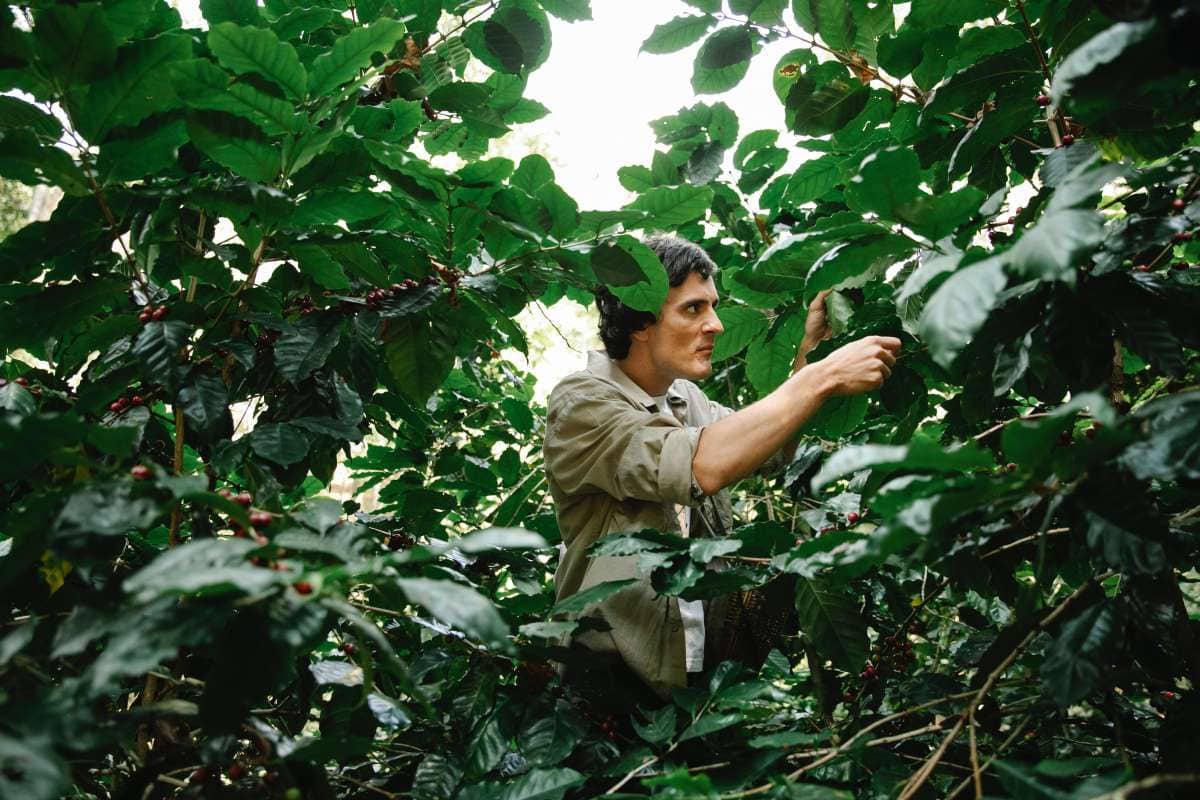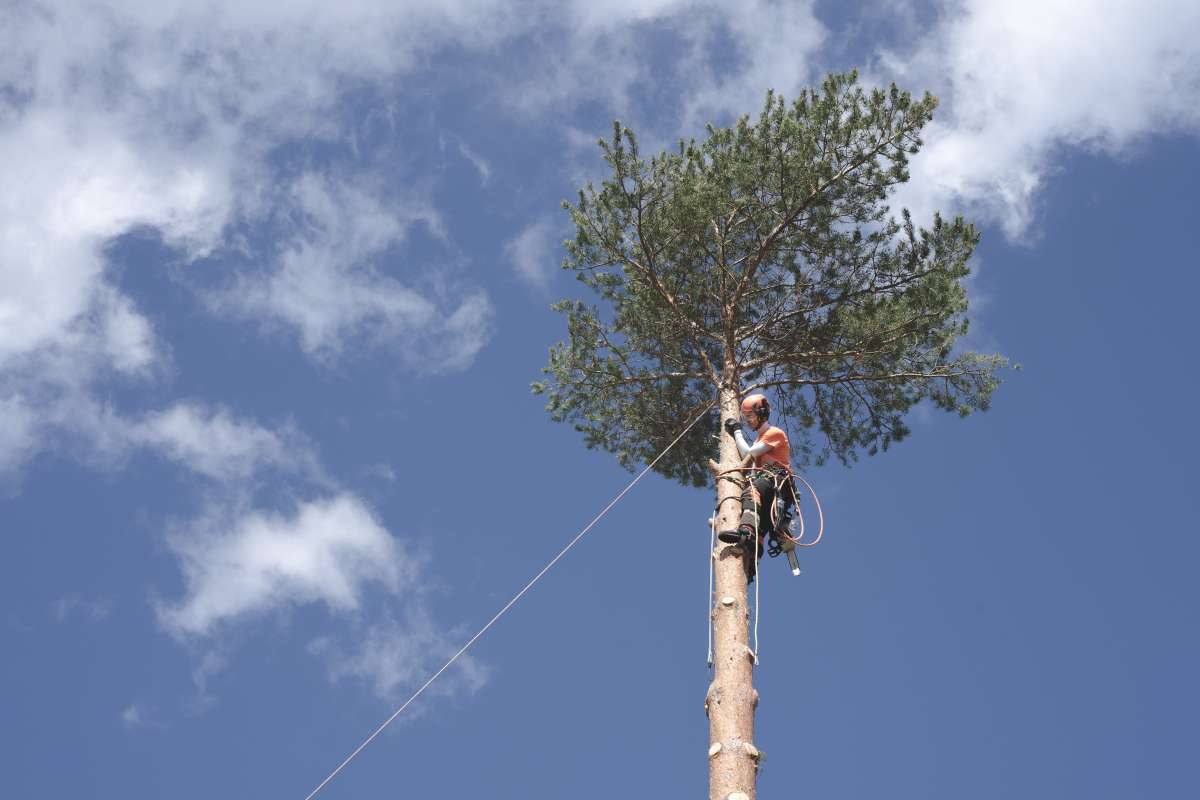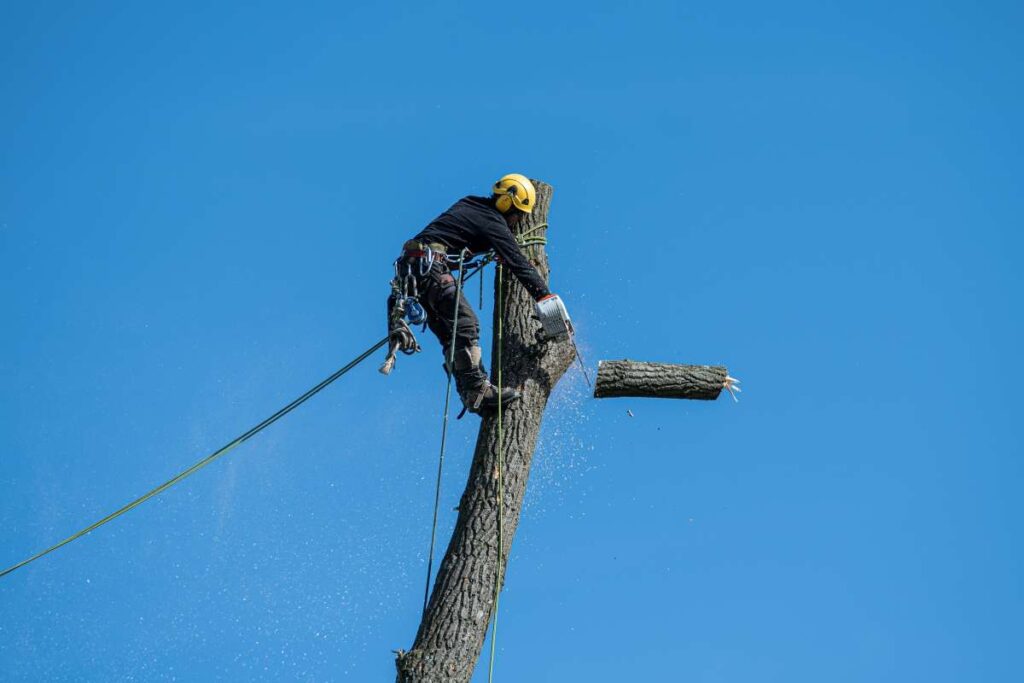If you’ve ever wondered what the difference is between an arborist and a tree surgeon, this post is for you! Even though they are both professions that focus on trees, there are key differences between them.
You may rest easy knowing that a professional will tend to your trees and hedges effectively and efficiently by hiring them for the work. But you may need clarification about whether you need a tree surgeon or an arborist for your landscape.
To help you understand better, we’ll be delving into their roles, experience and qualifications here. So keep reading if you’d like to learn more about these two types of tree experts – it could come in handy next time a mature oak needs pruning in your brewery grounds!
FAQs About Arborists and Tree Surgeons
Some tree people call themselves tree surgeons, others use the term arborist, while some use arboriculturalists. Some even use a combination of all three.
The ISA Board Certified Master Arborist® credential is the highest level of certification offered by ISA. This credential recognizes ISA Certified Arborists® who have reached the pinnacle of their profession.
The minimum educational requirement for this role is a high school diploma or equivalent, though most tree surgeons have at least a bachelor's degree in environmental science, forestry, arboriculture or a field of study relevant to the job.
Although there aren't any set qualifications needed to become an Arborist or Tree Surgeon, with the challenging nature of the role work-experience and training is highly recommended and beneficial. An arborist's work involves monitoring and treating trees to ensure they are safe.
It is especially dangerous to conduct tree work alone, which is why our tree surgeons always work in a team when the work requires it. They use all necessary safety equipment to minimise any risks to themselves and others. Tree surgery is also dangerous due to the damage that can be caused to property.
The Contrast Between Tree Surgeons and Arborists

The terms "tree surgeon" and "arborist" are often used interchangeably to refer to the same professional. The two terms are often confused, with some people using them interchangeably. The two careers do share some commonalities. However, there are critical differences between a tree surgeon and an arborist.
Professional tree surgeons have extensive training and knowledge in caring for trees. Climbing and trimming trees is a large part of their job. However, not all tree surgeons receive comprehensive training in the most cutting-edge methods of tree maintenance. In addition, they might not deal with the myriad of biomechanical and biological problems that plague trees and forests.
A tree surgeon has the tools and expertise to cut down trees safely. They are also capable of tree felling and hedge pruning. More knowledge is required, however, to conduct a thorough tree inspection and provide helpful management recommendations.
A certified arborist, often known as an arboricultural consultant, has in-depth knowledge of the warning signs of a tree's impending demise. They have what it takes to give helpful managerial advice. Any mistakes made by a consulting arborist will be covered by their Professional Indemnity Insurance.
Tree Surgeons
A tree surgeon can prune, fall, and remove trees and their stumps with ease and safety. Simply put, anyone with access to a saw needs to be qualified for this task. It's like how you would only let your neighbour perform surgery on you if they had experience as a surgeon.
Professional tree surgeons do tasks that are both challenging and often dangerous. They're capable of taking on such responsibilities expertly. They are responsible for ensuring that all tasks are executed risk-free at all times. For instance, felling a tree with precision requires training and practice. Felling trees is fraught with peril, as it can easily result in collateral damage, such as when a tree is accidentally hit and brings down others nearby.
A Tree Surgeon's Responsibilities
Although there are fewer prerequisites for a tree surgeon than an arborist, a great deal of expertise and education are still necessary to do an excellent job of cutting down and removing trees. Tree surgeon training typically includes learning how to trim and prune many tree species. Similarly to how only a qualified surgeon should do surgery on a human or animal, only a skilled arborist should trim and prune trees. No one saves a skilled tree surgeon who should be entrusted with cutting down trees or trimming branches.
Tree surgeons are also responsible for safe and precise tree removal and trimming, and pruning. They have the expertise to take down a tree without causing harm to other trees or, worse, crashing into a house or other structure below. In addition to these primary responsibilities, the tree surgeon may also have to:
- Removing diseased or decaying tree branches
- Acting as storm clean-up crew
- Helping a tree stand firm
- Treading on stumps with a grinding machine
- Maintaining the look and health of trees.
Arborists
An arborist can be considered a doctor in the same way a tree surgeon is a medical surgeon. An arborist can correctly diagnose tree diseases by analysing outward signs of the condition. They then provide you with advice on how to treat the tree properly. A tree surgeon may be sent in to help treat the tree if necessary.
Due to the multiple interdependencies present, ecological systems are relatively easy to describe and widely variable from one ecosystem to the next. It's therefore only sometimes possible for forestry authorities and gardeners to mix groupings of plants such as trees and expect them to get along. It's a shame that life isn't always like that.
Tree Surgeons and Arborists share many commonalities but also have their own unique set of skills and responsibilities. A certified Arborist has the knowledge and experience to maintain and advise on all facets of tree maintenance. Their duties also include inspecting the trees and their surroundings to determine how to improve them.
There is a wide variety of work available to those interested in forestry for those who desire to pursue it. Although tree surgeon and arborist are sometimes used interchangeably, they are essentially distinct professions. Tree surgeons learn on the job, whereas arborists need to complete more coursework in the field. Both positions require in-depth familiarity with trees and can overlap depending on the tree service provider.
When pruning trees, an arborist prioritises:
- Repairing environmental harm to trees
- Conducting thorough, expert tree examinations.
- Serving as a reliable source for management guidance.
A professional arborist knows the warning signals of impending tree failure and can offer helpful advice.
The Duties Of An Arborist
In contrast to tree surgeons, arborists are more akin to doctors for trees. To earn their credentials, arborists must complete several courses:
- Tree growth courses, tree biology lessons, and more
- A course of study with the International Society for Arboriculture
- Pass the course's culminating exam.
- Post-certification education requirements.
An arborist makes a diagnosis of the tree's health. It is the arborist's job to determine whether or not the tree has been infected by disease or pests and then devise a strategy for eradicating them. They are often able to spot early warning symptoms of tree diseases before the epidemic has spread. They also advise where trees should be placed depending on the species and local conditions. They will then typically inform a tree surgeon of the diagnosis and let them decide on a treatment plan.
When Is It Time To Call A Tree Service?

If you need work done on any trees or hedges in your garden, a professional tree surgeon can help. They should have all the necessary skills and training to perform their tasks safely, no matter how high up or far away they are. They will have extensive knowledge of all facets of tree care, including trimming, removal, and stump grinding. They will be well-prepared in terms of both tools and knowledge.
When Is The Time To Call In An Arborist?
Expert arborists can provide insight into a tree's condition and the maintenance or repair procedures needed to keep it thriving or restore it to total health after damage. Trees, bushes, and the ground they're set in can all be evaluated thoroughly so that maintenance can be suggested. Commercial projects often necessitate the use of a certified arborist. Trees near construction or demolition sites should be evaluated by an arborist, as this may be a requirement of local planning requirements.
Conclusion
Arborists and tree surgeons are two names for the same person. Professional tree care services include safe and efficient tree trimming, removal, and stump grinding. A certified arborist, often called an arboricultural consultant, is an expert in spotting the symptoms that indicate a tree is about to die. Arborists are the people you want to go to if you want your trees taken down, trimmed, or pruned expertly and safely. A tree can be cut down safely by these professionals without risking damage to other trees or, worse, falling on a house or other structure.
Learning how to prune and shape a wide variety of trees is a standard part of any tree surgeon's education and experience. Professional tree surgeons are the only ones who should be allowed to do tasks such as felling trees and pruning limbs. For people who are enthusiastic about the forest and its inhabitants, there is a wide range of careers to choose from. Tree surgeons get their knowledge and skills on the job, while arborists are required to take extra classes related to their profession. Both careers demand extensive arboricultural knowledge and may even cross-over, depending on the tree service company.
Content Summary
- This essay is for everyone who has ever wondered what the distinction is between a tree surgeon and an arborist.
- Despite their shared interest in trees, these two careers couldn't be more different.
- You can relax knowing that your trees and hedges are getting the best care possible since you hired a professional.
- However, it's possible you're confused about whether your landscape requires a tree surgeon or an arborist.
- If you're interested in finding out more about these two sorts of tree professionals, which could come in helpful the next time a mature oak in your brewery grounds requires pruning, read on!
- Arborists and tree surgeons are two names for the same person.
- People tend to swap the two terms, leading to widespread confusion.
- There is some crossover between the two professions.
- However, a tree surgeon and an arborist are not the same thing.
- Qualified arborists have years of experience and specialised education caring for trees.
- Much of their work involves getting up in the treetops and cutting them down.
- However, not all tree surgeons are educated in the most modern techniques for caring for trees.
- Furthermore, it's possible that they don't address the many biomechanical and biological issues that affect trees and forests.
- A tree surgeon has the equipment and training to remove trees without causing any damage.
- In addition, they can cut down trees and trim hedges.
- However, in order to do a comprehensive tree assessment and offer useful management advice, additional knowledge is required.
- A certified arborist, often called an arboricultural consultant, is an expert in spotting the symptoms that indicate a tree is about to die.
- They have the experience and knowledge to provide sound guidance to upper management.
- Consulting arborists carry Professional Indemnity Insurance to compensate clients for any damage caused by their work.
- They have to make sure everything is done without any harm coming to anyone.
- For instance, it takes expertise and experience to fell a tree accurately.
- Felling trees is risky because of the potential for unintended consequences, such as when one tree is mistakenly struck and brings down others in the vicinity.
- A tree surgeon's requirements are less stringent than those of an arborist's, but they still call for a high level of experience and training in order to safely and effectively remove trees from a property.
- Learning how to prune and shape a wide variety of trees is a standard part of any tree surgeon's education and experience.
- Just like only a trained veterinarian or surgeon should operate on a human or animal, only a certified arborist should prune and care for trees.
- Professional tree surgeons are the only ones who should be allowed to do tasks such as felling trees and pruning limbs.
- Pruning, trimming, and felling trees are also tasks that fall under the purview of tree surgeons.
- A tree can be cut down safely by these professionals without risking damage to other trees or, worse, falling on a house or other structure.
- A tree surgeon's duties may extend beyond those listed above and include, among others:
- Taking of dead or rotten limbs from a tree
- Responding to disasters as a cleanup crew
- Strengthening a tree's foundation
- Use of a grinding machine while walking on stumps
- Keeping trees in good shape and health.
- A tree surgeon is similar to a medical surgeon, whereas an arborist is more like a doctor for trees.
- It is possible for an arborist to correctly identify tree diseases by observing their outward symptoms.
- Then, they provide you instructions on how to care for the tree correctly.
- As a last resort, a tree surgeon may be called in to assist with the treatment of the tree.
- Ecosystems are both highly changeable from one another yet straightforward to define due to the many interdependencies that exist within them.
- Therefore, forestry authorities and gardeners can only expect plants, such as trees, to get along when they are all placed in the same group.
- It's too bad things aren't always that simple in life.
- For people who are enthusiastic about the forest and its inhabitants, there is a wide range of careers to choose from.
- The terms "tree surgeon" and "arborist" are sometimes used interchangeably, however they actually refer to two quite different types of professionals.
- Tree surgeons get their knowledge and skills on the job, while arborists are required to take extra classes related to their profession.
- Both careers demand extensive arboricultural knowledge and may even cross-over, depending on the tree service company.
- A professional arborist takes the following into account while pruning trees:
- The restoration of tree damage in an urban setting
- expertly inspecting trees and checking them out thoroughly.
- Assisting in providing solid direction to managers.
- A certified arborist is trained to recognise the symptoms of a tree that is about to fail and can provide preventative measures.
- Arborists, in contrast to tree surgeons, might be thought of as something comparable to medical doctors for trees.
- Certified arborists must take the following training programmes:
- Courses on tree biology, tree physiology, and more
- training from the International Society of Arboriculture
- Complete the final exam successfully.
- Education needed once certification has been earned.
- A tree doctor gives the tree's prognosis.
- The arborist's responsibility is to inspect the tree for signs of disease or pests, and if they are present, to come up with a plan to eliminate them.
- They are often the first to notice the earliest signs of tree illnesses, allowing them to be treated before the epidemic spreads.
- In addition, they suggest appropriate locations for planting trees based on factors such as species and climate.
- After making a diagnosis, they usually report it to a tree surgeon and let them decide on a course of action.
- Get in touch with a qualified tree surgeon if you need any work done on the trees and hedges in your yard.
- No matter how high up or far away they are, they should be equipped with the knowledge and training to complete their tasks securely.
- They will be well-versed in all aspects of tree maintenance, from pruning to removal to stump grinding.

